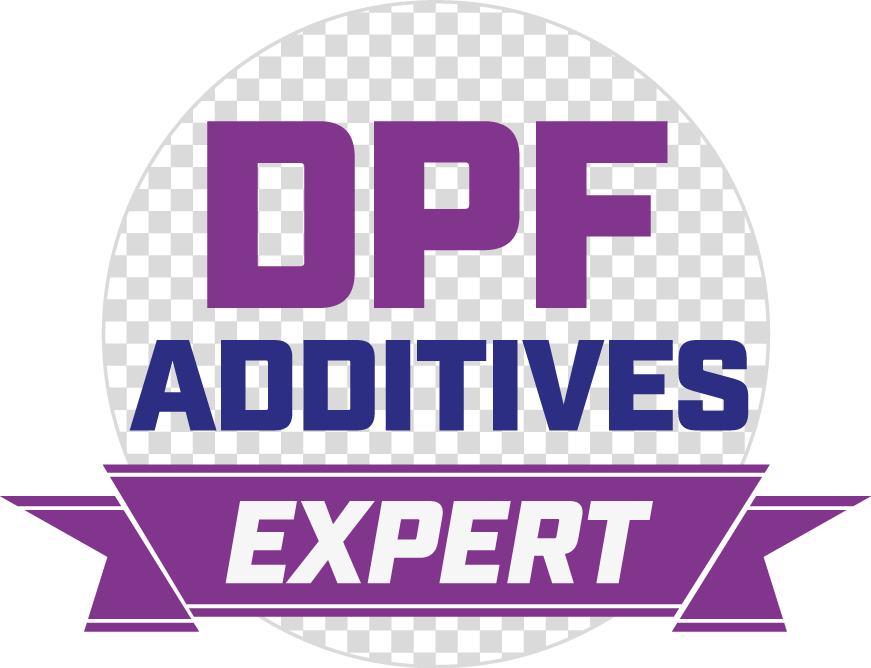On this page you will find some of the Frequently Asked Questions about Diesel Particulate Filters and DPF additives.
Can’t find what you’re looking for? Ask The Expert for answers.
Click on a FAQ to reveal the answer.
Can a DPF Cleaner be used on a vehicle with an on-board reservoir DPF Additive?
Some vehicles are fitted with an on-board reservoir of a DPF additive which is dosed into the fuel at regular intervals. These systems are found in Peugeots, Citroens and some Ford, Volvo and Mazda cars that use the same engine technology. Some heavy duty vehicles with retrofitted exhausts systems to lower emissions also use this approach – for more information see History of DPF Additives. Like all DPF additives, these reservoir fluids will contain a fuel borne catalyst (FBC). The on-board reservoir will need to be topped up periodically to keep the DPF regenerating efficiently – usually at service intervals.
However, there is no reason why an aftermarket, bottled DPF additive (often called ‘DPF Cleaner’ or ‘DPF Regenerator’) cannot be used in a vehicle fitted with an on-board reservoir as a ‘top up’ treatment.
If the on-board system is operating normally but the vehicle still suffers DPF blockage problems (e.g. due to constant low speed, urban driving), the vehicle may benefit from an occasional additional dose of an aftermarket DPF Additive. The extra FBC should act as a boost to the effect of the on-board system and may be sufficient to overcome the problem.
Do all cars have DPFs?
Almost all diesel cars registered after September 2009 will have a Diesel Particulate Filter (DPF) fitted. This was when the Euro 5 emissions were introduced and DPFs were generally used to lower the particulate emissions of cars and light commercial vehicles. However, some diesel cars earlier than this may have DPFs, especially those which were marketed for their environmentally friendly ‘green’ image.
How does a DPF additive work?
There are many fuel treatments available on the market now sold as ‘Cleaners’ or ‘Regenerators’ for Diesel Particulate Filters (DPFs). Typically, these are single use bottles which are added to a tank of fuel. As the DPF is part of the exhaust system, these products all have to overcome the problem of getting the active ingredient from the fuel tank, through the engine and into the exhaust – surviving combustion on the way. To do this, reputable brands employ a type of ingredient called a Fuel Bourne Catalyst (FBC). FBCs are metal-based chemicals which become embedded in the soot as it forms, meaning it is in exactly the right place to work when the soot is trapped in the DPF. Once in the DPF, FBCs cause the soot to burn away at a lower temperature than it would otherwise, helping to clear the filter. Find out more about FBC Chemistry >>
Why do I need a DPF anyway?
Diesel Particulate Filters (DPFs) are used to reduce the amount of particulate matter (soot) released from the exhaust of a diesel vehicle. They are usually fitted to vehicles in order to meet required emissions regulations such as the European Emission Standards (Euro limits). Reducing these emissions is important because they are very damaging for people’s health, particularly in the concentrations found in many urban areas. The World Health Organisation (WHO) has listed both diesel exhaust in general, and particulates specifically, as carcinogenic. In addition to increasing the risks of cancer, particulates are also believed to worsen asthma, other respiratory problems and cardiovascular disease.
Will a DPF Additive always put out the warning light?
In many cases, if a reputable DPF Cleaner additive is added to the fuel soon after the DPF warning light is triggered, the light will clear during subsequent driving. This is in response to a reduction in the soot loading in the DPF due to efficient regeneration enabled by the catalyst particles provided by the additive. However, there are a few scenarios in which a DPF additive would not put out the warning light:
- If there is a mechanical problem with the DPF. For example, if the filter has been physically damaged or if there is a fault with one of the sensors.
- If it has been left too late. If an overwhelmingly large amount of soot has built up in the filter then it may not be possible to regenerate using an additive alone. The DPF may need to be removed from the vehicle for an external cleaning treatment.
- If the problem is due to significant ash build up in the filter. Over long-term use, the DPF will accumulate incombustible ash (mostly from the engine oil). As a result, an external clean may be required every 100,000 miles or so.
- In some vehicles the DPF warning light will not clear by itself, even if there is no longer a problem. In this case, the vehicle will need to be taken to a workshop for the warning light to be reset.
In most cases, it would be worth trying a DPF Additive to solve a DPF problem indicated by the warning light. If this proves insufficient to clear the warning light, then more expensive and time-consuming solutions would need to be considered.
